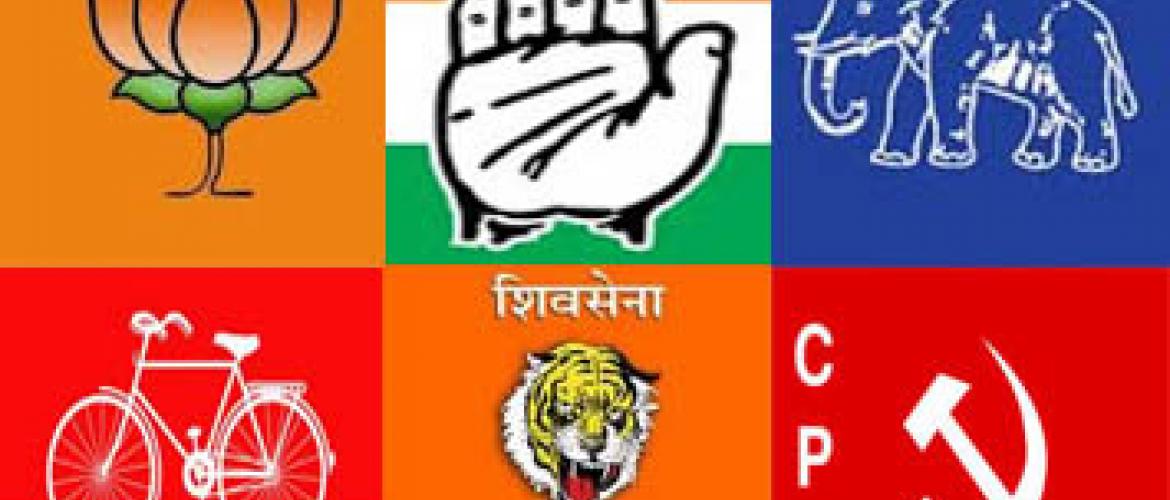Symbols have played a pivotal role in India since its first general election in 1951-52 and they have grown beyond the convenience of representing a party. Symbols today represent a far greater role in India’s electoral politics, with each denoting allegiance to a particular ideology and the associated followership of a national leader.
Background
Symbols in the Indian elections have always played a crucial part since the country's first general election in 1951-52. At the time, barely a fifth of the population could read or write, so symbols were introduced on the ballot papers to help the mass of illiterate citizens to cast their jobs. Candidates on the campaign trail had to make sure their supporters knew which symbol represented their party.
Literacy is now widespread but election symbols are now a deep-rooted part of India’s political tradition and have become a powerful tool for political parties to convey their messages.
Although it's common for party symbols to represent values or ideologies, India's system differs in an important way: Rather than designing logos themselves, parties must instead choose from a pre-existing list controlled by election officials.
A Pool of symbols
The Election Commission of India (ECI) currently maintains a pool of thousands of symbols. The images represent aspects of everyday life in India, from a stack of tires and a gramophone to an auto rickshaw and even a cricket player.
Parties must choose three symbols, in order of preference, after which they are allocated one by the ECI. Once an image is "reserved," it cannot be used by any other party, leaving new entrants to pick from a list of "free" symbols.
In the age of mass communication and social media, these symbols have evolved into a placeholder for a party manifesto, as in the symbol now represents everything the party will stand for.
The symbols of regional parties that could play prominent roles in the next Parliament include an elephant (Uttar Pradesh’s BSP), the rising sun (Tamil Nadu’s DMK party) and a bicycle (Uttar Pradesh’s Samajwadi Party).
In the past, the election commission allowed parties to choose animals and birds as symbols. India’s Congress used to use the cow and the calf, animals sacred in Hinduism, and a lion and a tiger are still used by some regional and left parties.
However, the election commission no longer allows new parties to choose animal symbols, following concerns from animal rights groups that the animals would be subjected to cruelty as parties started bringing them to election rallies. When parties split, bitter battles are often fought over who will keep the election symbol.
One of the first things that strike any observer of Indian elections is their centrality in India’s political life. Banners, posters, and crowds fill the streets; massive processions and rallies are a norm; the media is full of election news and every street corner is buzzing with political gossip. Though on a steady decline of late, this kind of visibility in Indian elections symbolises the pivotal role elections have come to play in Indian politics.
The parliamentary style democracy of the country also makes it easier to openly advertise a symbol, logo or catchphrase over a single national leader, or at least that how it was a few years ago.
Assessment
Our assessment is that symbols were integrated into Indian politics as a means for the largely illiterate population to identify with certain political parties. We believe that as far as the role of symbols is pondered, they are inseparable with India’s electoral duties. Symbols are known for giving hope, heralding change and representing a common, shared value system. We feel that symbols in Indian politics have now become the ultimate representative of the parties, sharing with them a common theme or potential of hope which all voters eventually yearn for.

